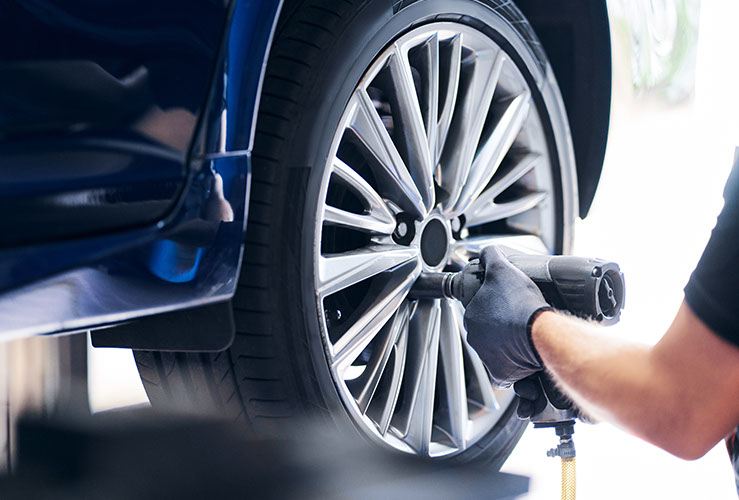Learn the average cost to replace budget, mid-range, premium, and winter tyres
If you notice wear and tear on any of your car's tyres, or if the tread depth is below the 1.6mm legal minimum, it's time to get them replaced. Worn or damaged tyres could impact safety, handling, and fuel efficiency.
But how much does it cost to replace your vehicle's tyres? Here we provide a guide to costs and answer a number of related questions.
How much to replace car tyres?
Budget tyre (per tyre): £50-£60
Mid-range tyre (per tyre): £70-£80
Premium tyre (per tyre): £200-£220
Winter tyres (all four): £600
Wheel alignment/balancing: around £10 per tyre
What's the difference between budget, mid-range, and premium tyres?
Budget tyres tend to be made of cheaper materials than mid-range or premium tyres and may wear out more quickly. They may also have poorer (longer) stopping distances and deliver reduced fuel economy. They may also result in more noise.
However, budget tyres may be sufficient if you drive at a steady pace around town. If you often drive long distances on motorways, it may be better to invest in mid-range or premium tyres.
Mid-range tyres should last longer, offer improved fuel efficiency, and have a shorter stopping distance than budget tyres. They may also result in less road noise. They are a sensible option if you frequently travel at higher speeds over longer distances.
Premium tyres should deliver the best performance in terms of lifespan, fuel efficiency, stopping distances, and road noise. However, they may only be worth the extra cost if you own a high-end vehicle and plan to drive longer distances at faster speeds.
Given the fact your tyres could save your life in an accident - either by resulting in shorter stopping distances or being less likely to suffer a blowout - it's important to carefully consider which type of tyres are best for your driving habits/style.

Why are premium/branded tyres better?
Premium or branded tyres are likely to offer a number of benefits in terms of grip, fuel efficiency, and lifespan. This is because the companies who manufacture them have large research and development budgets, resulting in more durable, higher-performance tyres. These extra development costs are passed on to the customer.
Can I change my own tyres?
If you have sufficient mechanical knowledge and experience, it may be possible to change your own tyres. However, for the majority of motorists, it's easier and quicker to pay a professional to do the task.
Additionally, a professional will be able to balance the wheels after they have been fitted - something that you cannot do at home since a special wheel balancing machine is needed. You also won't be able to align your wheels at home.
Why is wheel balancing important?
Wheel or tyre balancing ensures there are no weight imbalances in your wheel/tyre setup. Properly balanced wheels help make driving smoother, safer, more stable, and result in less vibration. Your local garage can do this when they replace your tyres.
Why is wheel alignment important?
If your wheels are not properly aligned, they may wear out unevenly and cause steering wheel vibrations. Your local garage will be able to align your wheels after they have fitted new tyres.
Is it worth buying winter tyres?
Fitting winter tyres can cost £600-£700 per set of four. This may seem expensive, but they will provide significantly better grip (and shorter stopping distances) on cold, icy, snowy, or wet roads. They work best at below seven degrees Celsius when the rubber compound becomes softer, resulting in better grip in wintry conditions.
Can I replace one tyre?
It's not a good idea to have tyres of different ages and degrees of wear and tear. It's better to replace tyres in pairs - i.e. the front or the rear pair. Front tyres tend to wear out much more quickly than rear tyres because they undergo more braking, steering, cornering, and traction forces.
How long do front tyres last?
Front tyres last around 20,000 miles. Based on the average annual UK driving distance of 6,600 miles, this means your front tyres should be replaced every 3 to 4 years.
How long do rear tyres last?
Rear tyres last about twice as long as front tyres - at 40,000 miles. You should replace your front tyres with your rear tyres, and fit new ones to the rear. Having newer tyres with better treads on the rear will result in better handling and wet grip, and will help avoid oversteer and aquaplaning.




